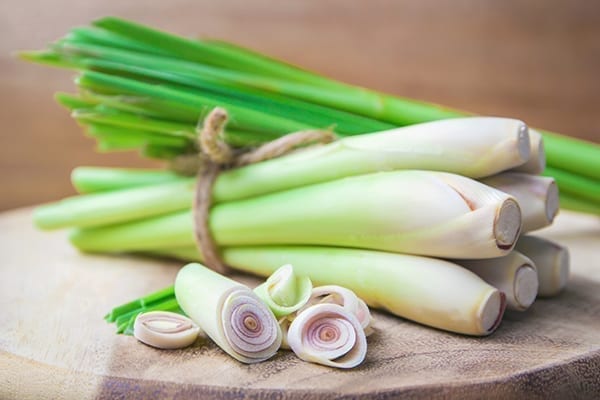Introduction to Lemongrass
Lemongrass is more than just a fragrant herb; it’s an essential component of Thai cuisine and traditional healing practices. With its bright citrus flavor and uplifting aroma, this versatile plant has captured the hearts—and palates—of food lovers around the globe. Whether you’re sipping on a warm bowl of Tom Yum soup or enjoying a refreshing glass of lemongrass tea, the essence of this magical herb elevates every dish it touches.
But lemongrass isn’t solely about culinary delight. It carries deep cultural significance in Thailand, where it has been used for centuries as both food and medicine. From providing warmth during chilly evenings to offering soothing properties for various ailments, lemongrass serves multiple purposes that go far beyond your dinner plate.
Join us as we explore the captivating world of lemongrass—from its rich history to its numerous health benefits and practical uses in everyday cooking. Discover how incorporating this remarkable herb into your life can enhance not only your meals but also your overall well-being.
The History and Cultural Significance of Lemongrass in Thailand
Lemongrass has deep roots in Thai culture, playing an essential role for centuries. This fragrant herb is not just a culinary ingredient; it embodies the essence of Thailand’s rich heritage.
Historically, lemongrass was used in royal kitchens and traditional medicine. It graced tables during festivals and celebrations, symbolizing prosperity and health.
In rural areas, villagers often cultivated this herb as part of their daily lives. Beyond cooking, they recognized its therapeutic properties to treat various ailments.
Today, lemongrass remains a staple in Thai households. Its fresh aroma evokes memories of family gatherings and communal meals. The plant is revered not only for its flavor but also as a representation of connection—between people and nature.
This cherished herb continues to bridge generations while enriching the cultural tapestry of Thailand with every dish it’s added to.
Culinary Uses of Lemongrass in Thai Cuisine
Lemongrass is a cornerstone of Thai cooking, imparting a unique citrusy flavor that elevates any dish. It’s often found in soups, curries, and stir-fries, where its vibrant essence brings warmth and depth.
Tom Yum soup showcases lemongrass beautifully. The fragrant stalks infuse the broth with a refreshing zing, balancing spicy and savory notes perfectly.
In curry pastes, lemongrass works alongside chili peppers and garlic to create robust flavors that define many Thai dishes. Its aromatic qualities enhance everything from green curry to massaman.
Grilled meats also benefit from this herb’s zest. Marinating chicken or seafood with minced lemongrass adds an enticing aroma that tantalizes the senses.
For those seeking lighter fare, fresh salads incorporating sliced lemongrass offer a delightful crunch along with zesty brightness—ideal for hot days or as side dishes at gatherings.
Health Benefits and Traditional Healing Properties of Lemongrass
Lemongrass is more than just a culinary delight. It has been celebrated for its health benefits for centuries in traditional medicine.
Rich in antioxidants, lemongrass helps combat oxidative stress in the body. Its anti-inflammatory properties may reduce pain and swelling, making it useful for those with chronic conditions.
This herb also acts as a natural diuretic, promoting kidney function and helping to flush out toxins. Many turn to lemongrass for digestive support; it can ease bloating and promote overall gut health.
Additionally, lemongrass is known to have calming effects on the mind. Its soothing aroma may reduce anxiety levels while improving sleep quality at night.
Used topically, diluted lemongrass oil can relieve muscle soreness and skin irritations. This versatile herb truly embodies wellness through nature’s bounty.
How to Use and Prepare Lemongrass
Using lemongrass in your kitchen is both simple and rewarding. Begin by selecting fresh stalks, characterized by their firm texture and vibrant green color.
To prepare it, trim the tough ends off each stalk. Remove the outer layers until you reach the tender part inside. This inner core is where most of the flavor resides.
You can slice lemongrass thinly for stir-fries or soups. Alternatively, bruise it with a knife to release its essential oils before adding it to broths or marinades.
For tea, steep chopped lemongrass in hot water for a refreshing drink that boasts numerous health benefits.
If you’re feeling adventurous, consider infusing oils or creating homemade dressings using lemongrass for an aromatic twist on traditional recipes.
Growing Your Own Lemongrass
Growing your own lemongrass is surprisingly simple and rewarding. This fragrant herb thrives in warm climates, making it perfect for home gardens or even pots on a sunny balcony.
Start with fresh stalks from the store. Look for healthy ones with vibrant green tops. Place them in water to encourage root growth; within a week, you’ll see roots forming.
Once rooted, transfer your lemongrass into well-drained soil. Choose a spot that receives full sunlight—at least six hours each day is ideal.
Water regularly but avoid over-saturating the soil. Lemongrass enjoys moisture but dislikes soggy conditions.
Fertilizing every few weeks can boost growth and flavor. As it matures, you’ll notice its distinctive scent filling your garden space.
Harvesting is easy! Simply cut leaves as needed, allowing new shoots to thrive continuously throughout the growing season. Your culinary adventures await!
Conclusion: Incorporating Lemongrass into Your Daily Life for Flavor and Wellness Benefits
Integrating lemongrass into your daily life can enhance both the flavor of your meals and contribute to your overall wellness. This versatile herb is not just a staple in Thai cuisine; it offers a refreshing taste that can elevate a variety of dishes, from soups to salads.
For those looking to explore its health benefits, incorporating lemongrass tea into your routine may provide calming effects and aid digestion. The natural oils found in lemongrass are known for their antimicrobial properties, making them an excellent addition to homemade remedies.
Growing your own lemongrass at home is easier than you might think. With minimal care, you can enjoy fresh stalks whenever you need them. Whether used as a seasoning or brewed as tea, cultivating this fragrant herb allows you to embrace its benefits fully.
Experiment with adding chopped lemongrass to marinades or use it as a fragrant base for stir-fries. Its citrusy notes complement seafood beautifully and pair well with aromatic spices like ginger and garlic.
As part of both culinary adventures and wellness routines, lemongrass stands out as an exceptional herb worth exploring further. Embrace the vibrant flavors and healing properties it has to offer—your palate (and body) will thank you!

















